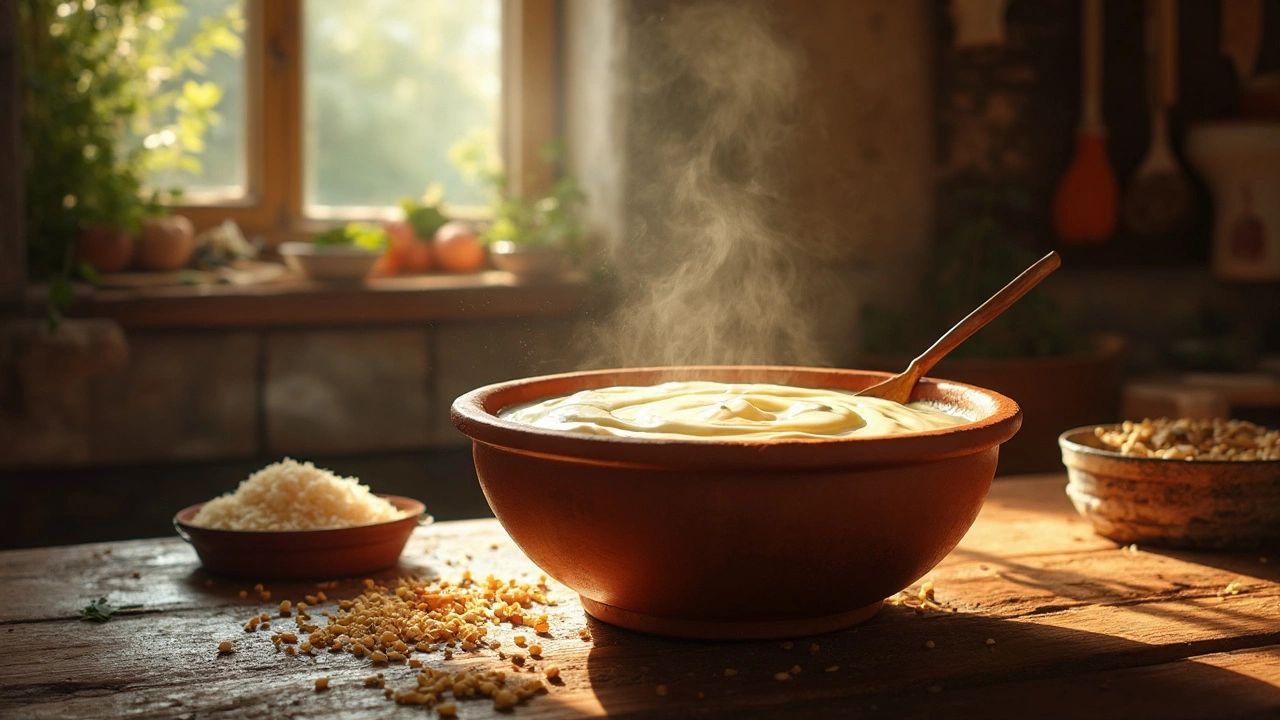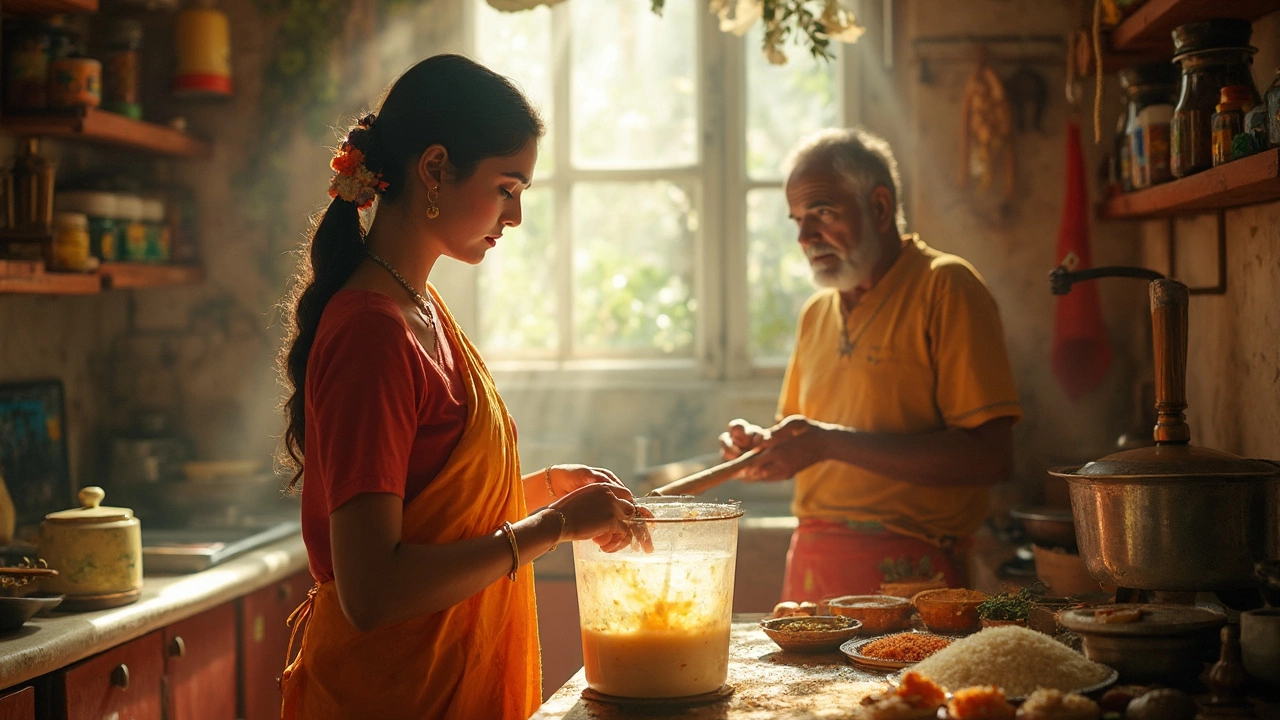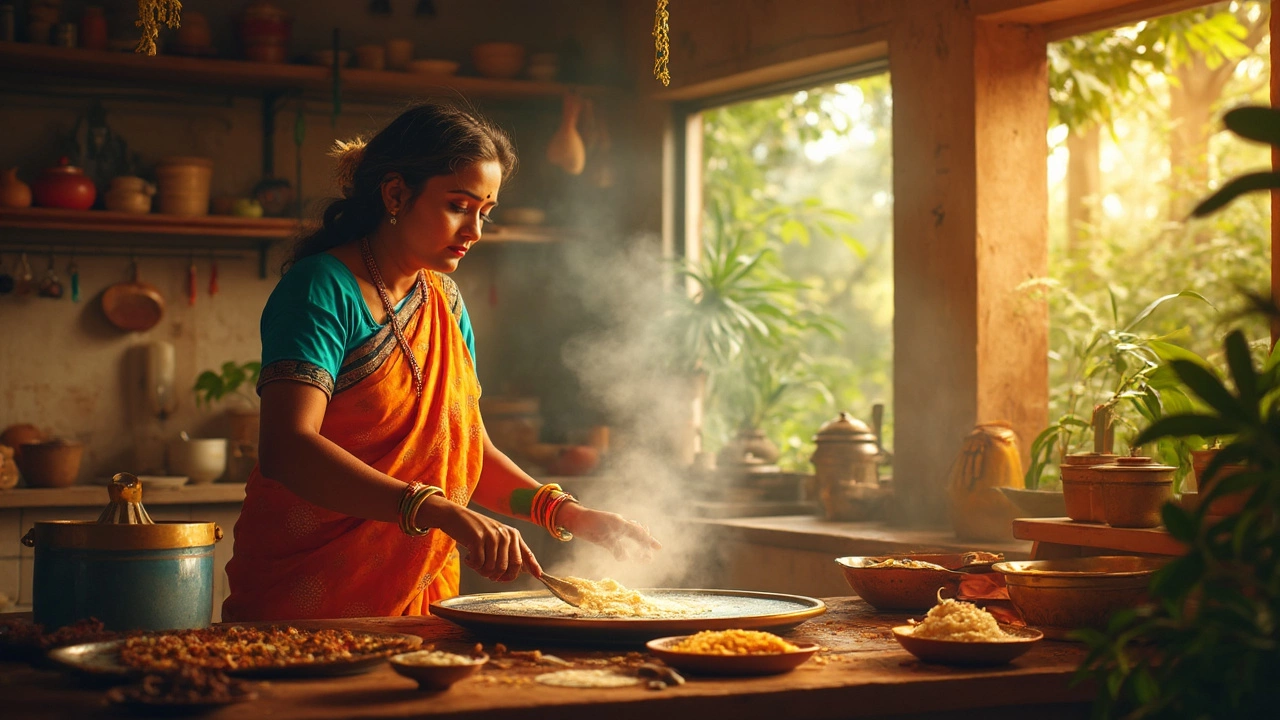Dosa – The Ultimate Guide
When working with Dosa, a thin, crisp crepe made from a fermented rice‑and‑lentil batter that hails from South India. Also known as South Indian crepe, it serves as a breakfast hero, a snack, and even a base for inventive fillings. dosa thrives on three core ingredients and a few science‑backed steps, which we’ll break down so you can skip the trial‑and‑error phase.
One of the most misunderstood steps is Fermentation, the natural process where wild yeasts and bacteria convert starches into sugars, producing the airy texture and tangy flavor of a good batter. Fermentation is the engine that creates the tiny bubbles you see when you pour the batter onto a hot pan. Without it, the crepe stays dense and flat. Timing, temperature, and the right starter culture (usually a bit of curd) are the three levers you pull to control this process.
Speaking of starter cultures, Curd, plain yogurt or homemade dahi that introduces lactic acid bacteria to the batter, plays a dual role. It kick‑starts fermentation and adds a subtle sour note that balances the earthiness of the lentils. Adding too much curd can over‑acidify the mix, making the batter overly sour and affecting the final color. A tablespoon per cup of rice is a safe starting point for most home cooks.
If you ever wonder why some dosas puff up while others stay limp, the answer often lies in Baking Soda, a leavening agent that releases carbon dioxide when it meets acid, lifting the batter during cooking. A pinch (about ¼ teaspoon) per batch can turn a flat crepe into a fluffy, almost pancake‑like dosa. The trick is to add it just before cooking, after the batter has rested, so it reacts with the residual acidity from the curd.
All these elements—fermentation, curd, baking soda—live inside the broader world of South Indian cuisine, a regional food culture known for its rice baselines, coconut accents, and bold spice blends. Dosa isn’t a standalone dish; it’s a canvas for chutneys, sambar, and inventive fillings like paneer or spiced potatoes. Understanding its place in this culinary ecosystem helps you pair it properly and experiment without losing its identity.
Key Factors for Perfect Dosa
Putting the pieces together, you get a simple semantic chain: Dosa encompasses fermented batter; fermented batter requires curd and controlled temperature; baking soda influences the batter’s fluffiness; and all of this fits within South Indian cuisine’s flavor philosophy. Master these connections, and you’ll cut down cooking time, avoid common pitfalls, and consistently serve a crisp, airy crepe. Below you’ll find a hand‑picked collection of articles that dive deeper into each of these topics—whether you need a quick fix for a stubborn batter, a science‑backed explanation of why lemon curdles milk, or tips on making your dosas extra fluffy. Keep reading to turn theory into tasty results.

Fast and Flavorful: Dosa Batter Fermentation Tricks Without Yeast
Making dosa batter without yeast is a traditional art that assures both quick fermentation and rich flavor. This article breaks down yeast-free methods using readily available ingredients like fenugreek seeds and poha. Discover how warm climates and simple room-temperature tricks can transform your batter. Read on to learn how to speed up the fermentation process and enjoy crispy dosas.

Quick Dosa Batter Fermentation: Tips to Get Soft Dosas Fast
Discover how to speed up dosa batter fermentation with practical tips to enjoy soft, delicious dosas in less time. The article explores factors affecting fermentation, including climate, ingredients, and kitchen hacks. It provides solutions to common pitfalls and suggests simple tweaks to traditional methods. You'll find easy steps to optimize batter preparation for those craving quick, fluffy dosas without the wait. Perfect for both beginners and seasoned cooks eager for efficient results.

Perfect Dosa Without Yeast: Quick Fermentation Tips
Mastering the art of making the perfect dosa can be tricky, especially when you want to skip the yeast. However, quick fermentation techniques can help you achieve that perfect batter consistency. From selecting the right rice to using climate-friendly methods, these tips ensure your dosas are crisp and delicious. Whether you're making them for breakfast or dinner, these methods are both time-saving and effective.

How to Get Light and Crispy Dosas Without Yeast Fast
Craving for light and crispy dosas but running short on time? Ditch the yeast and learn how to make perfect dosas quickly. Discover practical tips and a straightforward recipe that guarantees restaurant-quality results. Embrace the magic of fermented batter with simple, readily available ingredients. Say goodbye to complex methods and hello to a dosa delight.